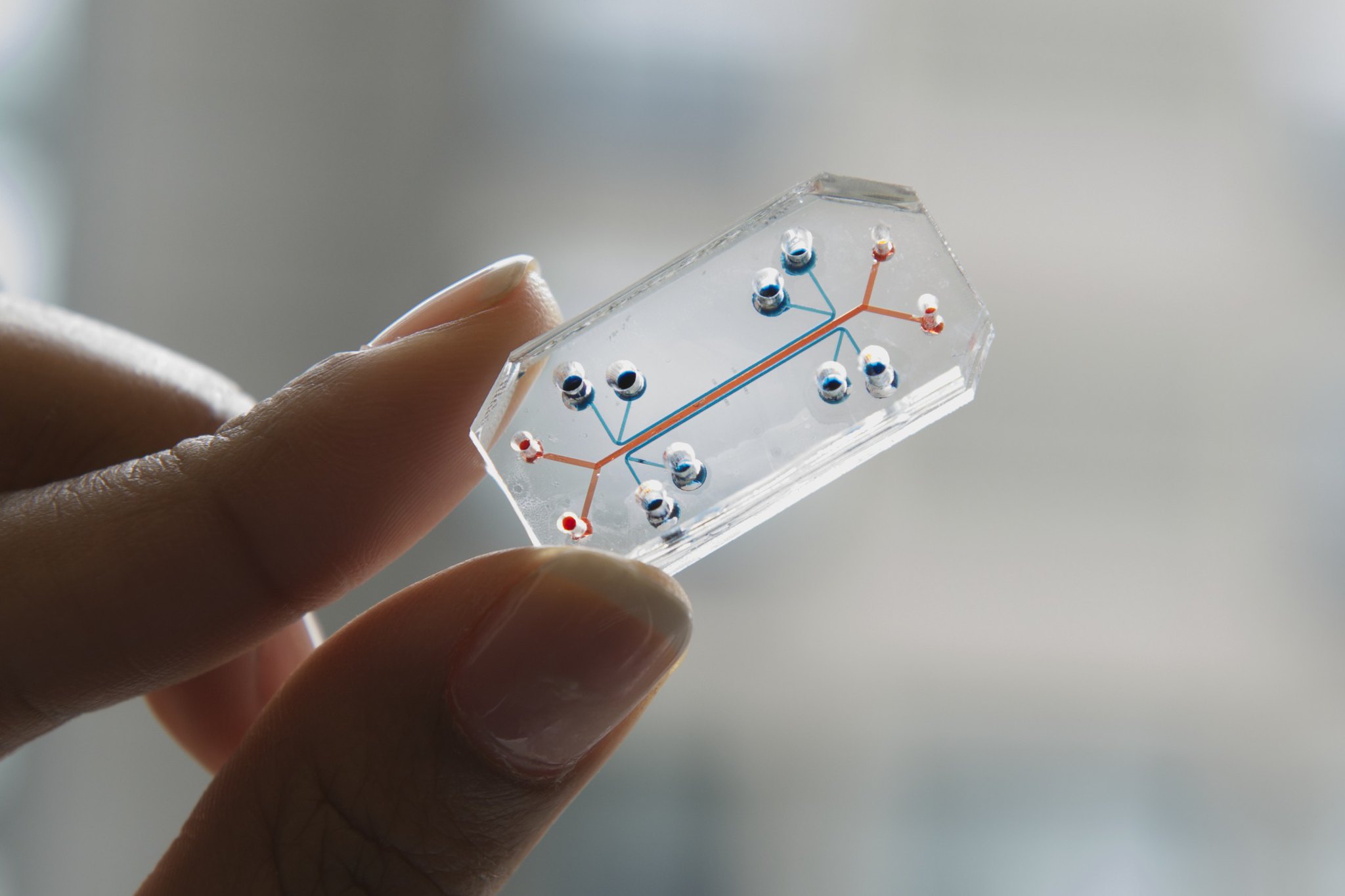 Vagina-on-a-chip. Credit: National Center for Advancing Translational Sciences / Flickr Public Domain Mark 1.0
Vagina-on-a-chip. Credit: National Center for Advancing Translational Sciences / Flickr Public Domain Mark 1.0The first “vagina-on-a-chip,” a device that recreates the vagina’s microbiome using real cells and bacteria, has been created by researchers.
According to bioengineer Don Ingber of Harvard University’s Wyss Institute for Biologically Inspired Engineering, it is challenging to study vaginal health in a laboratory environment since laboratory animals have “totally different microbiomes” than humans.
To solve this issue, he and his colleagues created a unique chip, the study for which was published in the journal Microbiome. The chip is a rectangular polymer shell about an inch long that contains living human vaginal tissue from a donor and a flow of estrogen-carrying substances meant to mimic vaginal mucus.
It might be beneficial to test medications against bacterial vaginosis (BV), a widespread microbial imbalance that makes many people more vulnerable to sexually transmitted illnesses and puts pregnant women at risk for premature birth.
https://t.co/cyKogq2Tbu Scientists Have Created World's First ‘Vagina-on-a-Chip’ https://t.co/HXTTvlbwEu pic.twitter.com/0h8drjFXwy
— Billy Carson II (@4biddnKnowledge) December 21, 2022
Purpose of organs-on-a-chip
Organs-on-a-chip can replicate actual biological function, facilitating the study of illnesses and drug testing. The lungs and the intestines are the only two organs that have previously been modeled. In this case, the tissue performs similarly to actual vaginal tissue.
Such chips can even modify the expression of certain genes in response to variations in estrogen levels. In addition, they are able to cultivate microbiomes similar to those of a person, complete with both “good” and “bad” bacteria.
For example, “Lactobacilli bacteria keep your vagina nice and acidic,” explains Ruth Mackay of Brunel University London, who was not involved in the current study. “But then Gardnerella [bacteria] come in…and create this alkaline environment.” This can lead to BV.
Researchers Ingber and co-workers have shown that Lactobacilli, which colonize the chip’s tissues and secrete lactic acid, contribute to keeping the chip’s pH at an optimally low value.
Conversely, introducing Gardnerella causes the chip to exhibit characteristic BV symptoms, including a rise in pH, cell damage, and inflammation. Simply put, the vaginal microbiome chip can reveal the effects of a balanced or unbalanced microbiota.
Personalization is the next phase. Ingber claims his team has begun studying unique microbiomes by transferring vaginal swabs’ worth of microorganisms to chips.
Dr. Achyuta Nori of St. George’s, University of London, who specializes in sexual health but was not involved in the study, feels the chip represents a major advancement. He says, “It could change how we practice medicine.”
As a microbiologist, Nori is especially interested in seeing how various antibiotic treatments for BV can influence different bacterial strains.
The current state of women’s health research is marked by “very, very poor quality of evidence,” he says. Using modern technology is a chance to enhance women’s health.
Critics of organ-on-a-chip technology
Organ-on-a-chip technology is frequently criticized for simulating organs in isolation from the rest of the body. Furthermore, due to the association between BV and labor problems, studies examining vaginal microbiota alterations during pregnancy have garnered a lot of attention from scientists.
The truth of the matter is such technology “does have its limitations,” as Mackay puts it, even though the chip indeed responds to estrogen. Mackay is overjoyed that the technology is now a reality but is somewhat skeptical the device can actually accurately simulate pregnancy without other feedback loops from other organs.
Aside from the obvious technological benefits, she argues that attracting the attention of someone like Ingber, whom she refers to as the “godfather” of organ chip technology, may mainstream research on vaginas. “There shouldn’t be any stigma around it,” she says. “But there is.”
Ingber says researchers “may not need all the other complexity that people assume is important” when replicating larger processes like pregnancy. His team is already hard at work trying to link the vagina chip to a cervix chip. They believe this may serve as a more accurate representation of the entire reproductive system.

 1 year ago
93
1 year ago
93











 English (US)
English (US)